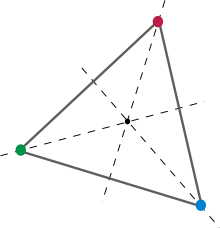
Back Действие на група Bulgarian Acció (matemàtiques) Catalan Akce grupy na množině Czech Gruppenoperation German Grupa ago Esperanto Acción (matemática) Spanish Rühma toime Estonian کنش گروهی Persian Action de groupe (mathématiques) French פעולת חבורה HE
| Algebraic structure → Group theory Group theory |
|---|
 |

In mathematics, many sets of transformations form a group under function composition; for example, the rotations around a point in the plane. It is often useful to consider the group as an abstract group, and to say that one has a group action of the abstract group that consists of performing the transformations of the group of transformations. The reason for distinguishing the group from the transformations is that, generally, a group of transformations of a structure acts also on various related structures; for example, the above rotation group acts also on triangles by transforming triangles into triangles.
Formally, a group action of a group G on a set S is a group homomorphism from G to some group (under function composition) of functions from S to itself.
If a group acts on a structure, it will usually also act on objects built from that structure. For example, the group of Euclidean isometries acts on Euclidean space and also on the figures drawn in it; in particular, it acts on the set of all triangles. Similarly, the group of symmetries of a polyhedron acts on the vertices, the edges, and the faces of the polyhedron.
A group action on a vector space is called a representation of the group. In the case of a finite-dimensional vector space, it allows one to identify many groups with subgroups of the general linear group GL(n, K), the group of the invertible matrices of dimension n over a field K.
The symmetric group Sn acts on any set with n elements by permuting the elements of the set. Although the group of all permutations of a set depends formally on the set, the concept of group action allows one to consider a single group for studying the permutations of all sets with the same cardinality.
